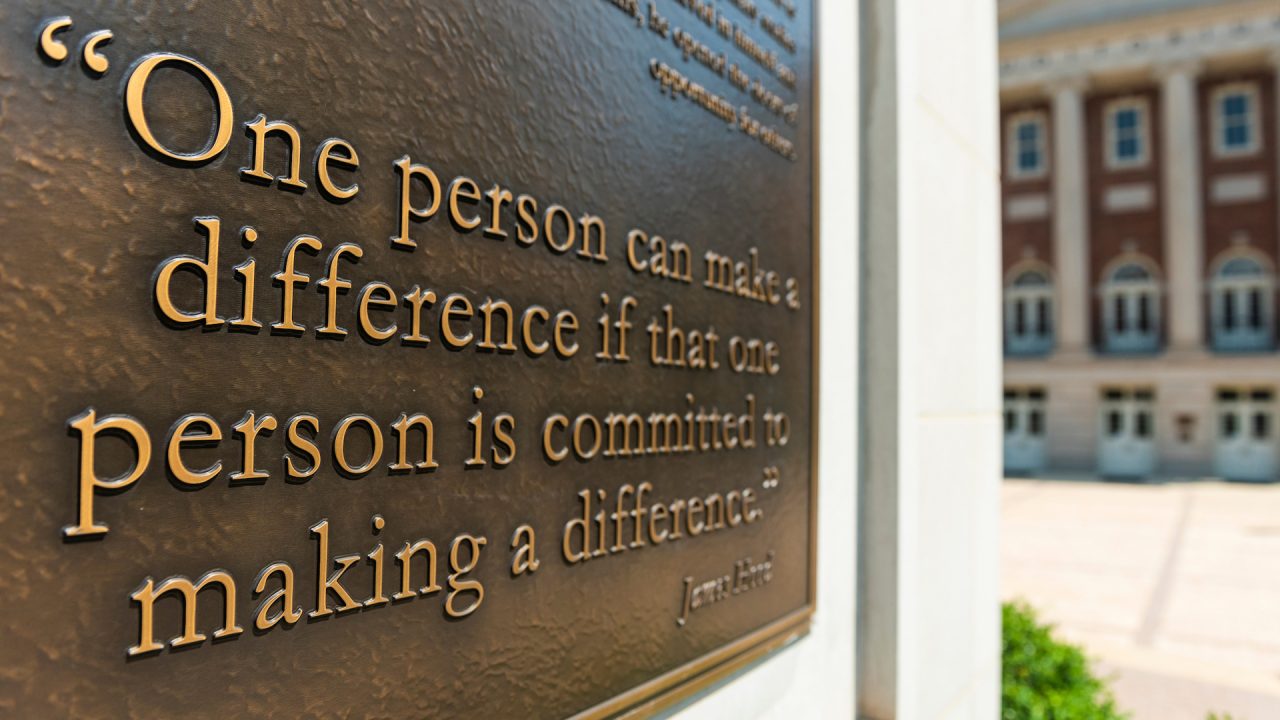The successful integration of The University of Alabama that began on June 11, 1963, opened doors not only to two Black students, but for decades of progress toward becoming an inclusive campus.
This past academic year, UA saw record enrollment of students of ethnic and racial minorities including an all-time high of 4,344 Black students. On June 10, 1963, however, there were no black students. After June 11, there were two: Vivian Malone and James Hood.
“Vivian Malone and James Hood were part of a larger wedge of history that pried open the doors to greater access for black citizens,” said Dr. John Giggie, associate professor of history and director of the Summersell Center for the Study of the South at UA.
That day is often remembered as “The Stand in the Schoolhouse Door,” after Alabama Gov. George C. Wallace stationed himself in the doorway of Foster Auditorium in an unsuccessful attempt to block Hood and Malone from gaining entry.

When Attorney General Robert Kennedy learned that Wallace planned to block the students inside Foster Auditorium, he authorized sending the National Guard to remove Wallace. In the face of these officers, Wallace complied and stepped aside. Malone and Hood enrolled without further incident.
That evening in a televised address to the nation, President John F. Kennedy declared civil rights no longer simply a legal issue, but a moral issue. One week later, he submitted a civil rights bill that became the foundation of the Civil Rights Act of 1964.
Though Wallace lost that day, what ended up as a publicity stunt became the narrative, framing the day about him and his stand in the door, a term he desired, Giggie said.
“More accurate would be to say the failure of that stand, and instead, the ability of Malone and Hood, these two black intellectuals, to demand access,” he said. “Titles are important. We communicate to our alums, to our citizens, to the young people of the state, so we need to recognize both the power of that day and the understanding that it was about opening doors, not standing in front of them.”
Wallace was outwitted by the administration of Kennedy, who federalized the Alabama National Guard and, along with his brother Robert Kennedy, sent U.S. marshals and Nicholas Katzenbach, U.S. deputy attorney general, to confront Wallace while he blocked the doors to Foster Auditorium where students registered for classes.

Behind the scenes, UA President Frank Rose’s administration meticulously planned for the day Malone and Hood would register for classes and how to integrate them successfully as new students.
“The role The University of Alabama played in managing its own integration is significant,” Giggie said. “What the University can say conclusively is that its senior leadership and many of its student/faculty body worked hard to ensure this peaceful integration as much as they could. It required federal efforts, but also they had to be matched with local support for integration.”
While Hood transferred to another university shortly afterward, Malone became the first African-American student to earn a degree from UA in 1965. Hood returned to the University in 1995 and earned a doctorate in interdisciplinary studies in 1997.
“… By attending The University of Alabama, I had the privilege of representing all those who fought for simple justice,” said Malone, then with the last name Jones, when she gave UA’s commencement address in 2000. “The simple act of walking through a schoolhouse door that had been barred to me, and all people of my color, by the governor of this state–that simple act represented an end to legal segregation in the American South.”
